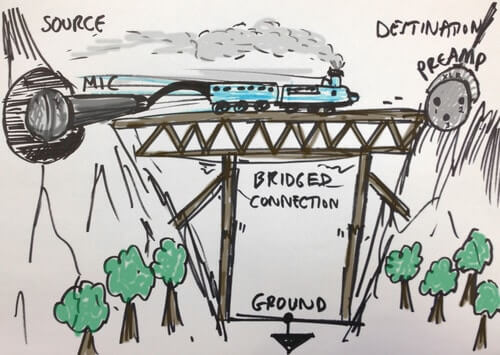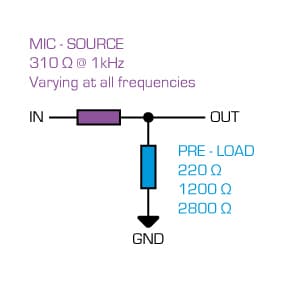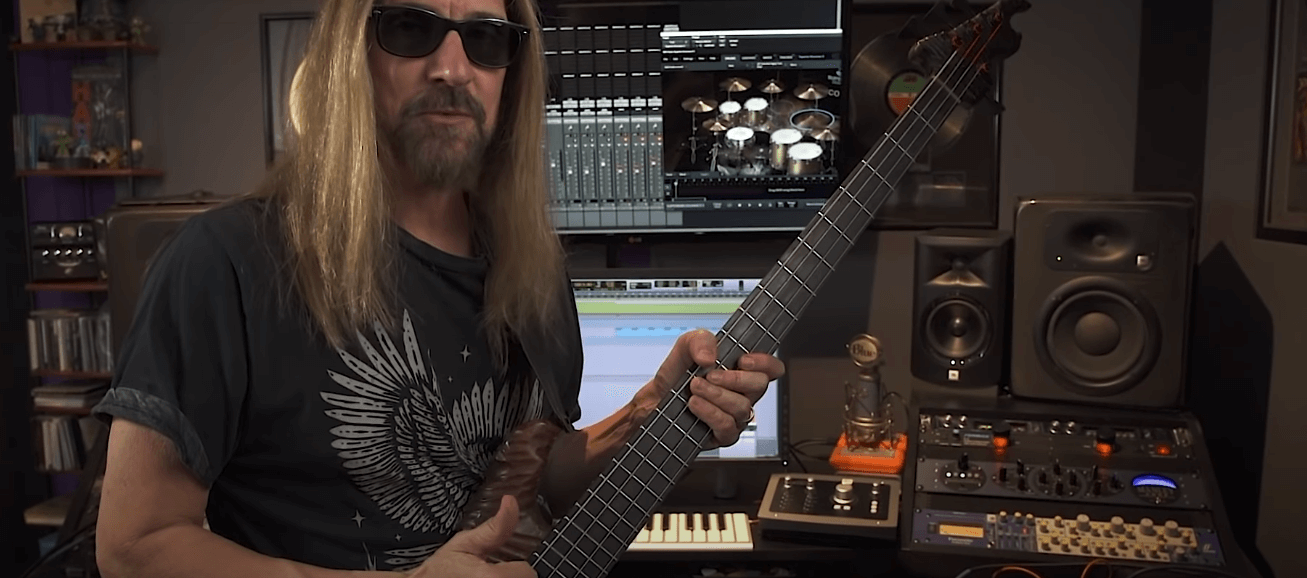Variable Impedance – What is it?
Humour me for a minute – I have an analogy that works here… Imagine a train crossing a bridge that is suspended high above ground between two mountain peaks.
The train is your source resistance – or in this case, the microphone. It can be low impedance (a light train) or high impedance (a heavy train).
The bridge is your load impedance – or in this case, the preamplifier. The bridge can be stiff or saggy (I know, I know!). The stiffer the bridge, the easier it is for the train (passengers = signal) to cross the mountainous gap! The heavier the train, the stronger the bridge should be…

In a typical “bridging” audio connection – you have a low source impedance and approximately 5-10 times that impedance in the load (stiffer bridge), this way as much voltage signal as possible arrives at the destination. The goal is to keep the signal “above” ground.
Normally we assume 150 ohms for the microphone output impedance and 1500 ohms for the preamplifier input impedance (x10). However microphones vary their output (source) resistance with frequency as both resistive AND reactive (inductive/capacitive) components are at play when forming an “impedance”.
Impedances & Bridging Loads – How They Work
The connection between mic and preamplifier can be seen as a typical potential divider – let’s take a standard SM57 dynamic microphone as an example. It’s output impedance is stated as a nominal 310 ohms.
The ASP880 has three input impedance options:
LO – 220 ohms (this is a saggy bridge)
MED – 1200 ohms (this is a classic 1970’s style bridge)
HI – 2800 ohms (this is a modern, strong and well braced bridge)
Imagine when the two devices are connected together – a 310 ohm source with a variable load from 220-2800 ohms:

The SM57 connects to the ASP880 preamplifier and we want to get as much tone and output voltage from the mic as possible – the preamplifier then adds 40-60dB of gain to this signal for recording.
For anyone not familiar with a potential divider – this simple circuit is the building block of all electronics and allows us to figure out “voltage transfer” between two points.
The simplest way to look at it is that the stiffer the load (R2), the more voltage from the source (R1) is carried to the output.
Vin = 1 volt, R1 = 310 ohms, R2 = 220, 1200 or 2800 ohms, Vout changes:
R2 = 220 ohms, Vout = 0.41 volt
R2 = 1200 ohms, Vout = 0.80 volt
R2 = 2800 ohms, Vout = 0.90 volt
What To Expect & Listen To
On top of level changes (which you should be aware of if you want to do a proper level matched A/B) we can experience the following changes in tone when varying the load that the microphone operates into:
Speed of delivery – transient content
Punch
Detail – in particular the “room” pickup from the off-axis parts of the mic
Frequency response & timbre
Overall output level (-5dB for 220 ohms, -1dB for 1200 ohms, referenced to 0dB attenuation at 2800 ohms with a 150 ohm source)
Some things to bear in mind:
- Moving coil and ribbon mics display the greatest tonal change
- Transformer output capacitor microphones can also provide tonal variation with variable impedance
- Solid-state output (50 ohm typical) capacitor microphones are such a well designed, light and nimble train that they are often immune to loading effects and will display a much more subtle change, if at all.
- Contrary to popular belief, many ribbon microphones provide more generous low frequency performance (with less ringing) and greater sonic delivery when operated into higher impedances, so be sure to try the 3600 ohm HI setting!
How does it sound?
Drum Samples
Lo Z
Med Z
Hi Z
Our Products
-

2in | 2out Audio Interface
-

10in | 6out Audio Interface
-

10in | 14out Audio Interface
-

20in | 24out Audio Interface
-

24in | 32out Audio Interface
-

2in | 2out Audio Interface
-

4in | 4out Audio Interface
-

24in | 24out Audio Interface
-

Everything you need to start recording
-

8 Channel Smart Preamp with AD/DA
-

8 Channel Mic Pre & ADC
-

8 Channel Mic Pre + Tone Control
-

Modular Analogue Recording Console
-

Small Format Analogue Recording Console
-

Small Format Analogue Recording Console
-

Immersive Audio Interface and Monitor Controller
-

Desktop Monitor Controller


